Hue, the former imperial capital of Vietnam, is a captivating destination that offers a wealth of historical and cultural attractions. From the iconic Thanh Toan Covered Bridge to the majestic Thien Mu Pagoda, this city’s rich tapestry of sites provides a glimpse into Vietnam’s fascinating past. Whether you’re drawn to the Nguyen dynasty’s imperial tombs or the serene beauty of the Perfume River, Hue promises to captivate and inspire. Delve deeper into this enchanting city, and you’ll uncover a world of wonders waiting to be explored.
Key Points
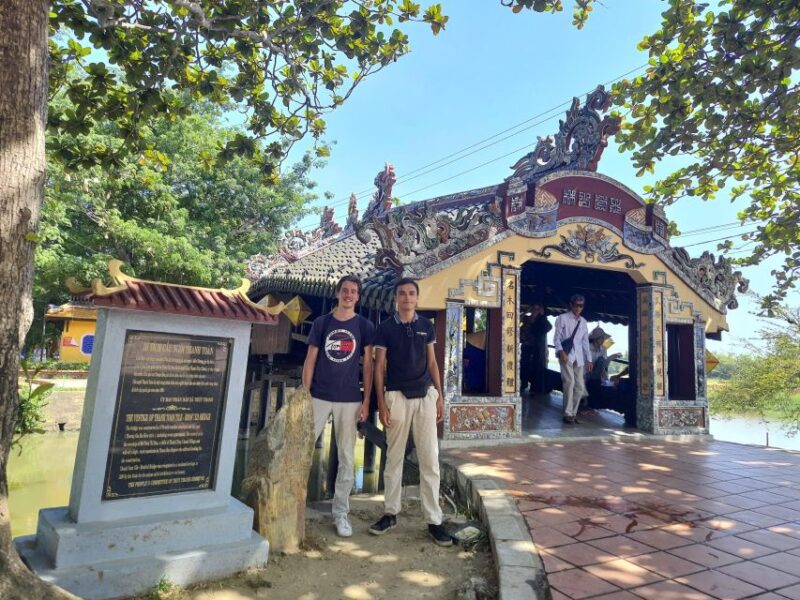
- Explore the 18th-century Thanh Toan Covered Bridge, a remarkable architectural gem with a curved roof and intricate carvings.
- Visit the Hue Tiger Arena, a remnant of the Nguyen dynasty’s imperial past where royal tiger and elephant fights took place.
- Marvel at the fusion of Vietnamese and Western styles in the Khai Dinh Tomb, showcasing the 12th Nguyen emperor’s eclectic tastes.
- Enjoy the tranquil beauty of the Tu Duc Tomb, a mausoleum blending Vietnamese and Chinese influences.
- Discover the eerie charm of the abandoned Thuy Tien Lake, a former imperial summer retreat with intriguing natural features.
Thanh Toan Covered Bridge
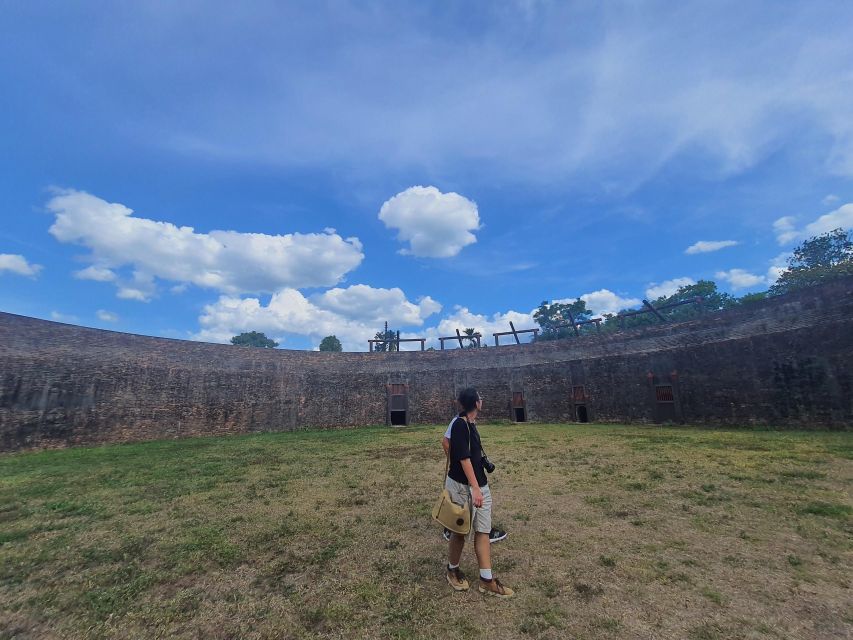
Thanh Toan Covered Bridge
The Thanh Toan Bridge, an 18th-century covered bridge, stands as one of the oldest in Vietnam, showcasing remarkable architectural craftsmanship from that era.
Stretching across the Huong River, this wooden structure features a unique design with a curved roof and intricate carvings along its sides.
The bridge not only serves as a functional crossing but also as a beloved historical landmark, attracting visitors from around the world to marvel at its timeless beauty.
Strolling across the Thanh Toan Bridge offers a glimpse into Vietnam’s rich cultural heritage and provides a serene setting to enjoy the tranquil riverside scenery.
You can also read our reviews of more tours and experiences in Hue Vietnam.
Hue Tiger Arena

In 1830, the Hue Tiger Arena was constructed as one of only two remaining structures of its kind in the world, offering a unique glimpse into Vietnam’s imperial past. This grand amphitheater was used for royal tiger and elephant fights, a popular form of entertainment during the Nguyen dynasty. Visitors can still see the stone grandstands and arena where these thrilling spectacles once took place.
| Feature | Description |
|---|---|
| Location | Southwest of Hue |
| Architecture | Stone grandstands and arena |
| Historical Significance | Used for royal tiger and elephant fights |
| Remaining Structures | One of only two in the world |
| Visitor Experience | Glimpse into Vietnam’s imperial past |
Though the tiger fights are long gone, the Hue Tiger Arena stands as a testament to Vietnam’s rich cultural heritage and the opulent practices of its former ruling dynasties.
Khai Dinh Tomb
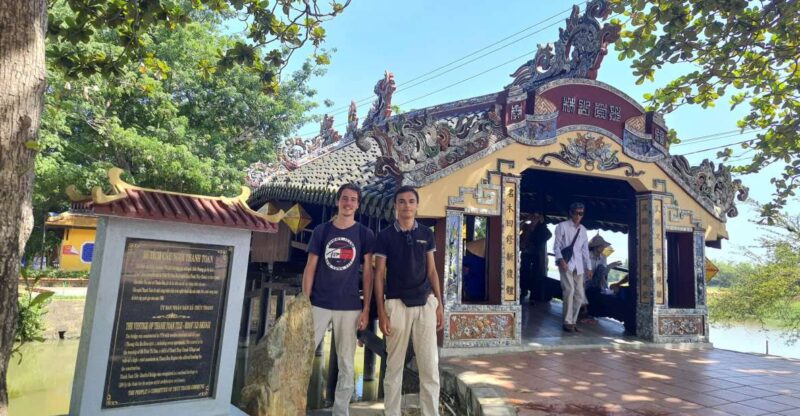
Although the Khai Dinh Tomb stands as a unique blend of Vietnamese and Western architectural styles, its construction was a reflection of the 12th Nguyen emperor’s eclectic tastes and his desire to incorporate various cultural influences.
The mausoleum features:
-
A fusion of Vietnamese elements, such as the sloping roof and ceramic tile decorations, with Western elements, like the grand staircase and ornate stone carvings.
-
Intricate details, including dragons, phoenixes, and other mythical creatures, that adorn the tomb’s exterior and interior.
-
A mix of materials, from granite and marble to ceramic and tile, that create a visually striking and architecturally significant monument.
Visitors to the Khai Dinh Tomb can witness the Nguyen dynasty’s artistic vision and the enduring legacy of this exceptional historical site.
Tu Duc Tomb
Among the most popular tourist attractions in Hue is the Tu Duc Tomb, the mausoleum of the Nguyen emperor who reigned in the 19th century.
This grand complex features ornate architecture, tranquil lakes, and lush gardens. Visitors can explore the emperor’s living quarters, temples, and the tomb itself.
The design blends Vietnamese and Chinese influences, with intricate carvings, pavilions, and bridges.
What makes the Tu Duc Tomb particularly interesting is its scale and attention to detail, as the emperor spared no expense in constructing his final resting place.
It’s a must-see for anyone looking to enjoy Vietnam’s imperial history and unique architectural heritage.
More Great Thing To Do NearbyThuy Tien Lake

Thuy Tien Lake is a fascinating and multifaceted spot located just outside of Hue. It offers visitors a chance to explore its intriguing natural features and unique history.
The lake’s main draws include:
- Exploring the abandoned water park, with its dilapidated structures and eerie atmosphere.
- Admiring the serene beauty of the lake, surrounded by lush greenery and towering mountains.
- Visiting the former imperial summer retreat, which provides a glimpse into the leisure activities of the Nguyen dynasty.
Whether you’re interested in the lake’s natural wonders or its historical significance, Thuy Tien Lake is a must-see destination that promises a memorable experience for all who visit.
- Da Nang: Hue Imperial City Tour Via HaiVan Pass Full-day Tour
- Hue Imperial City With Sightseeing From Tien Sa Port
- From Hue: Bach Ma National Park Private Car Transfer
- Hue: Night Street Food Tour by Cyclo With a Local Guide
- From Hoi An Private Car Transfer to Hue Via My Son HollyLand
- Chan May Port to Hue Imperial City Tour by Private Car
An Hien Garden House
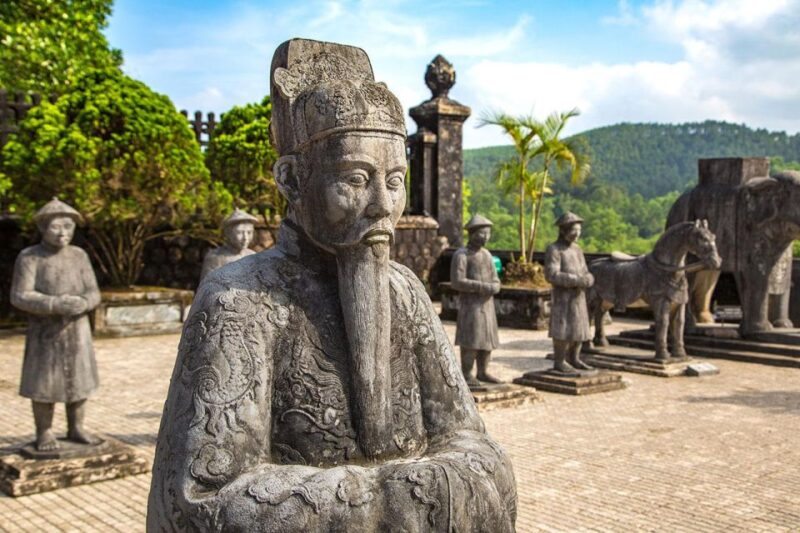
Located within the historic city of Hue, the An Hien Garden House offers visitors a glimpse into the tranquil lifestyle of the Nguyen dynasty.
This well-preserved garden house showcases the harmonious blend of architecture and nature that was prized by the imperial family during their reign.
Wandering through the lush gardens, visitors can admire the traditional Vietnamese architecture, including the meticulously designed pavilions and ponds.
The serenity of the site provides a peaceful respite from the bustling streets of Hue.
With its rich history and beautiful setting, the An Hien Garden House is a must-visit destination for those seeking to understand the cultural heritage of Vietnam’s imperial past.
Thien Mu Pagoda
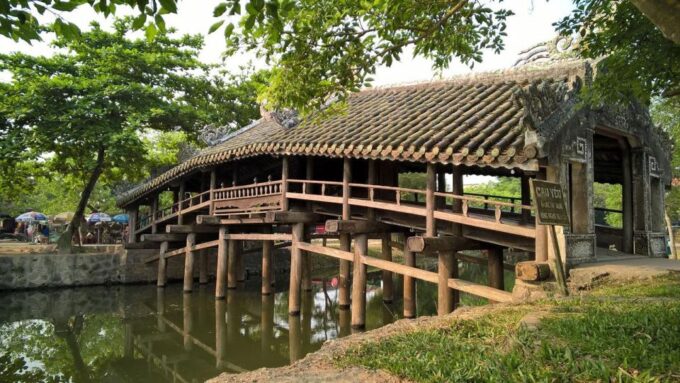
The Thien Mu Pagoda, a prominent Buddhist temple, stands as a revered landmark along the Perfume River, southwest of Hue. This iconic pagoda, with its seven-tiered structure, has long been considered one of the most important religious sites in Vietnam, attracting visitors from around the world to witness its architectural grandeur and spiritual significance.
The pagoda’s significance is multifaceted:
-
It serves as a hub of Buddhist worship and meditation, with monks and devotees gathering regularly to observe religious rituals and ceremonies.
-
The pagoda’s architecture, blending Vietnamese and Chinese design elements, is a testament to the country’s rich cultural heritage.
-
The site offers stunning views of the Perfume River and the surrounding landscape, making it a popular destination for both spiritual and scenic exploration.
Frequently Asked Questions
What Are the Opening Hours of the Sites?
The opening hours vary by site, but most are open daily from 7am to 5pm. Visitors should check opening times in advance, as some sites may have reduced hours or close on certain days.
Is There an Additional Fee to Enter the Tombs?
There is an additional fee to enter the tombs. The entrance fee for Khai Dinh Tomb and Tu Duc Tomb is typically included in the tour package, but visitors may need to pay a separate fee if not part of the tour.
Can I Take Photographs Inside the Pagoda?
Visitors are generally permitted to take photographs inside the Thien Mu Pagoda, but should be respectful of the sacred nature of the site. Photography may be restricted in certain areas or during religious ceremonies.
Is There a Dress Code to Visit the Landmarks?
There is generally no strict dress code to visit the landmarks in Hue. However, it’s recommended to wear modest clothing that covers shoulders and knees out of respect for the cultural and religious significance of the sites.
Are the Sites Wheelchair Accessible?
Most of the sites in Hue are wheelchair accessible, though the historic tombs and pagoda may have some challenging terrain. It’s best to inquire about accessibility when booking the tour to ensure a comfortable experience.
Recap
Hue’s historical and cultural sites provide a captivating glimpse into Vietnam’s imperial past.
From the Thanh Toan Covered Bridge to the Thien Mu Pagoda, visitors can explore the city’s architectural wonders, imperial tombs, and tranquil gardens, offering a multifaceted experience that highlights Hue’s enduring significance as a former imperial capital.
You can check if your dates are available here:More Tour Reviews in Hue Vietnam
- Da Nang: Hue Day Trip From Danang by Car & Tour Guide
- Hue: Full-day Bach Ma National Park Trek And Beach Retreat
- From Hue: Botanic Garden, Paradise Cave, and Dark Cave Tour
- Chan May Port: Hue Heritage Tour
- Hue Imperial Private Tour via Hai Van Pass Train Experience
- Hue Private Sightseeing Highlights Tour Plus Edited Video
Not for you? Here's more things to do in Hue Vietnam we have recnetly reviewed
- NYNA Travel: 5 DAYS 4 NIGHTS Da Nang – Hue – Hoi An
- Hue Private City Highlights Tour With Female Tour Guide
- Tour Huế on the Back of a Motorbike
- Hue: Truoi Lake Serenity & Scenic Journey Over Hai Van Pass
- Hue City Sightseeing Private Tour By Train From Da Nang
- Hue To Hoi An Via Hai Van Pass & BaNa Hills -Golden Bridge
- CENTRAL VIETNAM TOUR 4 DAYS 3 NIGHTS
- NYNA Travel: 6 DAYS 5 NIGHTS Da Nang – Hue – Hoi An
- From Quang Binh: DMZ Quang Tri and Hue Guide Tour
- Hue To/From HoiAn: Sightseeing Transfer Between Hue & Hoi An
- Hue To Hoi An Via Hai Van Pass & BaNa Hills – Golden Bridge
- Hue By Night A Romantic Dragon Boat Cruise
